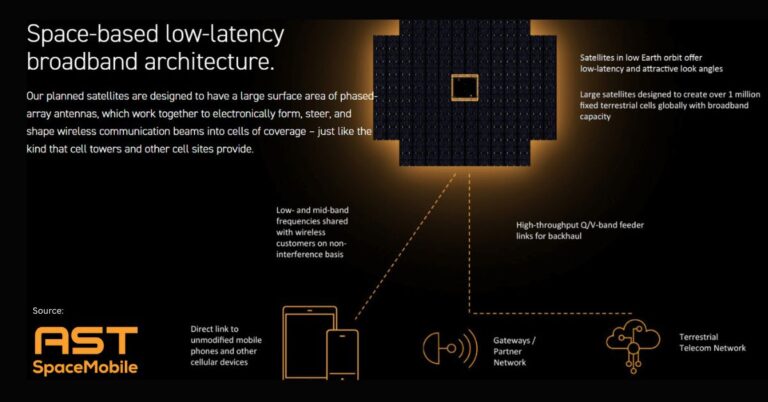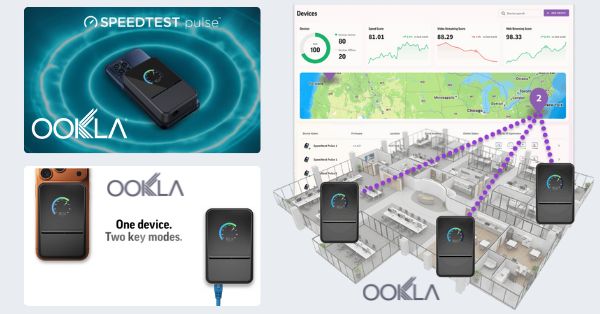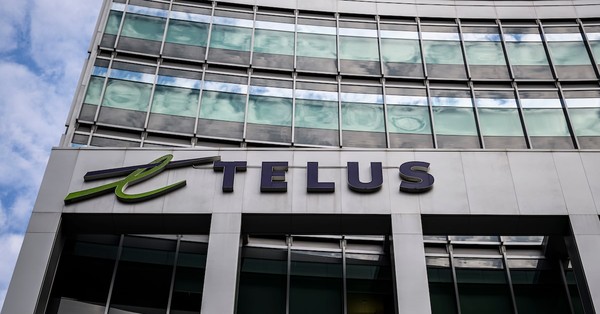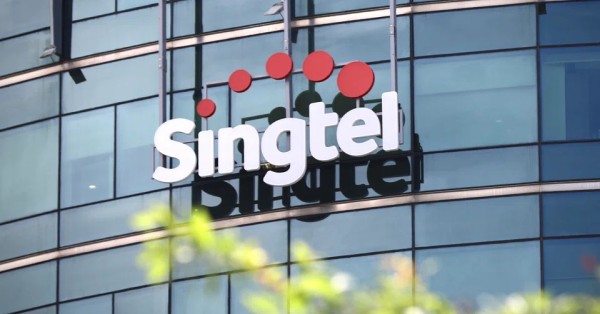Tech News & Insight
AST SpaceMobile is signaling a pivotal year ahead as it moves from demonstrations to commercial direct-to-device coverage with major operators and an aggressive launch schedule. The company’s plan to begin “intermittent nationwide” service in early 2026, followed by continuous coverage later in the year, is also a forcing function for device vendors, standards work, and MNO network integration. As AST scales to 45–60 BlueBird satellites by end-2026, pass frequency and overlap increase to support “continuous” service across the U.S., Europe, Japan, and other priority markets. AST reports over $3.2 billion in cash and liquidity.
Tech News & Insight
Alphabet will invest €5.5 billion in Germany through 2029 to expand AI-capable cloud infrastructure and office capacity, anchoring new buildouts in the Frankfurt Rhine-Main region. Google will construct a new data center in Dietzenbach, near Frankfurt, and continue scaling its Hanau campus opened in 2023. With Frankfurt’s role as Europe’s interconnection hub—home to DE-CIX—placement in Rhine-Main positions Google to serve latency-sensitive AI, analytics, and financial services workloads. Google Cloud will bring expanded capacity for services such as Vertex AI and Gemini models into its German regions, enabling enterprises to run training, fine-tuning, and inference closer to users and data.
- 5G, AI, Monetization
Tech News & Insight
Reliance Jio’s six-plan lineup for November 2025 blends low entry pricing with AI, cloud, and OTT hooks, signaling how prepaid is evolving from pure connectivity to service-led bundles. Starting at Rs 189, Jio is segmenting prepaid users by usage intensity (voice-first, balanced data, and long-validity) while nudging them into its digital stack: JioTV for content, JioAICloud for storage, and on select offers, Google Gemini Pro for AI. As 5G coverage and usage expand, Jio’s add-ons are designed to create reasons to stay on-network and upgrade. AI benefits in prepaid are rare globally; anchoring them to eligibility criteria and higher-tier 5G plans suggests an upsell path that can improve monetization without headline tariff hikes.
Tech News & Insight
Anthropic will spend $50 billion on U.S.-based AI data centers, signaling a rapid new phase for domestic compute capacity with direct consequences for power, fiber, and cloud interconnects. Anthropic plans a multi-year, $50 billion program to develop custom data center campuses in the United States, beginning with Texas and New York and with additional sites to follow. The initial wave targets 2026 go-lives, with an estimated 800 permanent jobs and roughly 2,400 construction roles tied to the program.
Tech News & Insight
This article investigates the future of work with AI agents, focusing on the concept of the “Green Light Zone.” The study analyzes worker desires and AI capabilities across various tasks, identifying four zones: Automation “Green Light” (where both are aligned), Automation “Red Light” (AI capable, workers don’t want it), R&D Opportunity (workers want it, AI can’t do it), and Low Priority. The study, using the WORKBank database, found that workers often want AI for low-value, tedious tasks, allowing them to focus on higher-value activities. Examples like project management, data entry, and customer service are highlighted. The article emphasizes the importance of aligning AI development with worker needs and preparing workers for evolving skills, ultimately advocating for a collaborative future where AI augments human capabilities, leading to a more efficient and fulfilling work environment.
Tech News & Insight
Ookla’s new handheld analyzer targets the in-building Wi‑Fi blind spot that drives churn, repeat truck rolls, and enterprise downtime. Across fiber, DOCSIS 4.0, fixed wireless access, and emerging LEO satellite, access speeds to the premises keep rising, but customer satisfaction is slipping because the experience is now judged over Wi‑Fi inside the site. Households run dozens of wireless devices, ethernet ports are disappearing, and enterprises are shifting to wireless‑first architectures on Wi‑Fi 6/6E today and Wi‑Fi 7 (802.11be) next. Surveys show most households faced Wi‑Fi issues in the past year, a large share required a truck roll, and a meaningful portion of those visits did not resolve the issue on the first attempt—fueling churn and avoidable Opex.
- 5G, AI, API, Sustainability
- Telecom
Tech News & Insight
A cascade of offers from OpenAI, Google, and Perplexity—amplified by Airtel and Reliance Jio—signals a deliberate push to convert India’s scale into durable AI usage, data, and future revenue. With more than 900 million internet users, rock-bottom mobile data prices, and a young, mobile-first population, India offers the world’s deepest top-of-funnel for AI adoption. Giving away premium access—such as a year of ChatGPT’s low-cost “Go” tier, Jio’s bundling of Gemini, or Airtel’s tie-up with Perplexity Pro—maximizes trial, habituation, and data collection across diverse languages and contexts. Even a low single-digit conversion rate translates into millions of subscribers, while non-converters still contribute valuable signals that improve models.
Tech News & Insight
A new joint plan from Vodafone and AST SpaceMobile aims to deliver satellite broadband directly to standard smartphones across Europe under a sovereign operational model. AST SpaceMobile has submitted plans through Germany for a space-based network designed to provide broadband directly to devices across Europe. Operations would run through SatCo, a Luxembourg-based joint venture with Vodafone announced earlier this year. The timing aligns with looming European spectrum decisions and intensifying competition in direct-to-device (D2D). S-band at 2 GHz is up for renewal across the region in 2027, and 700 MHz public protection and disaster relief (PPDR) frequencies are central to resilient communications strategy.
Tech News & Insight
Telus is in active talks to bring partners into its data-centre and AI business, signaling a capital-light approach to scale sovereign AI compute in Canada. Partner capital can accelerate GPU procurement, facility buildouts, and interconnect investments while aligning with customers that require sovereign environments distinct from hyperscale public clouds. Management addressed investor concerns about potential AI compute oversupply by emphasizing a modular build strategy, adding capacity in phases as demand materializes. The timing aligns with tightening data-residency requirements, heightened AI adoption, and demand for local alternatives to U.S.-centric infrastructure. This reduces stranded capital risk in a market with volatile GPU supply, rapid chip roadmaps, and evolving workload profiles.
Tech News & Insight
Singtel has sold another slice of its Bharti Airtel holding, freeing up capital to fund growth while continuing to rebalance a long-standing strategic investment. Singapore-based Singtel monetised roughly 0.8% of Airtel for about S$1.5 billion (approximately US$1.2 billion), recording an estimated net gain of S$1.1 billion. The sale is part of a multi-year capital management programme launched in 2021. Management has framed the initiative as a way to strengthen the balance sheet and redeploy capital into higher-growth digital infrastructure and digital services, while progressively equalising its Airtel ownership with Bharti Enterprises over time.
short
LMT, in partnership with Druid Software, launched Latvia’s first private 5G network at the Freeport of Riga. Replacing outdated Wi-Fi, the new 5G solution enhances port operations with improved automation, real-time data transfer, and reduced downtime. This milestone marks a major step in Latvia’s industrial digitalization and sets the stage for 5G adoption across sectors like manufacturing and agriculture.
short
LMT’s next phase focuses on expanding private 5G expertise beyond Latvia, forming global partnerships to deliver enterprise-grade 5G solutions in new verticals and regions.
short
From smart ports to automated farms, LMT is leading private 5G expansion across the Baltics, driven by distributed core innovation and cross-industry collaboration.
short
LMT’s experience at the Freeport of Riga highlights the importance of device testing, compatibility, and partner collaboration in building robust, real-world private 5G networks.
short
Beyond immediate efficiency gains, the private 5G network at the Freeport of Riga enables future innovations — from autonomous vehicles to data-driven logistics and sustainable port operations.
short
Through an incremental, well-planned rollout, LMT integrated the private 5G network with existing port systems without disrupting daily operations, maintaining Wi-Fi overlap during migration.
short
Druid’s Raemis™ platform provided LMT with a flexible, easy-to-manage private 5G core, ensuring reliable connectivity at the Freeport of Riga while supporting future scalability and advanced features.
short
LMT’s private 5G deployment at the Freeport of Riga followed a rigorous step-by-step approach — from technical validation and test coverage to seamless integration with enterprise IT systems.
short
At the Baltic Container Terminal, Wi-Fi coverage black spots caused downtime for operators and equipment. LMT’s private 5G network resolved these challenges, ensuring seamless connectivity across the 50-hectare port.
short
LMT and Druid Software joined forces to launch Latvia’s first private 5G network at the Freeport of Riga, addressing real operational challenges faced by the Baltic Container Terminal and laying the foundation for future automation.
short
LMT — Latvia’s largest mobile network operator, is redefining its role from a national telecom to a global technology innovator. In this introduction, Karlis Vilciņš explains how the company’s Systems Integration Business is driving 5G private network deployments across industries and export markets.
short
OneLayer redefines private LTE and 5G security with a device-first model, unified ONEID fingerprinting, and seamless integration across IT, OT, and cellular.
short
The next frontier: unified Zero Trust across IT/OT and seamless zero-touch onboarding that scales private 5G securely and efficiently.
short
The OneLayer Bridge connects cellular vendors like Ericsson and Nokia with IT security tools—ensuring end-to-end visibility and secure scaling.
short
Utility deployments show that automation and simplicity matter as much as cybersecurity—helping non-cellular teams onboard devices with ease.











